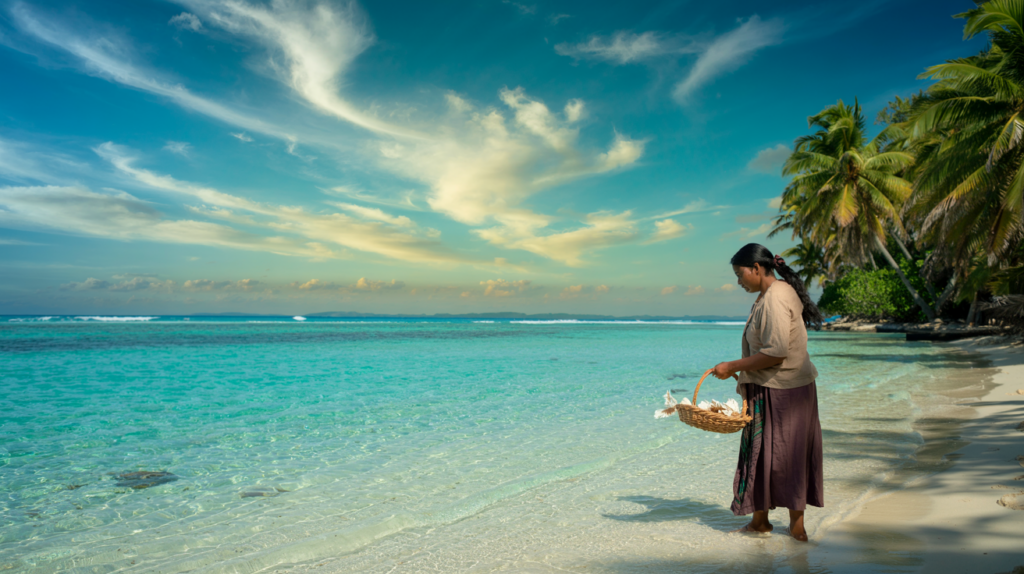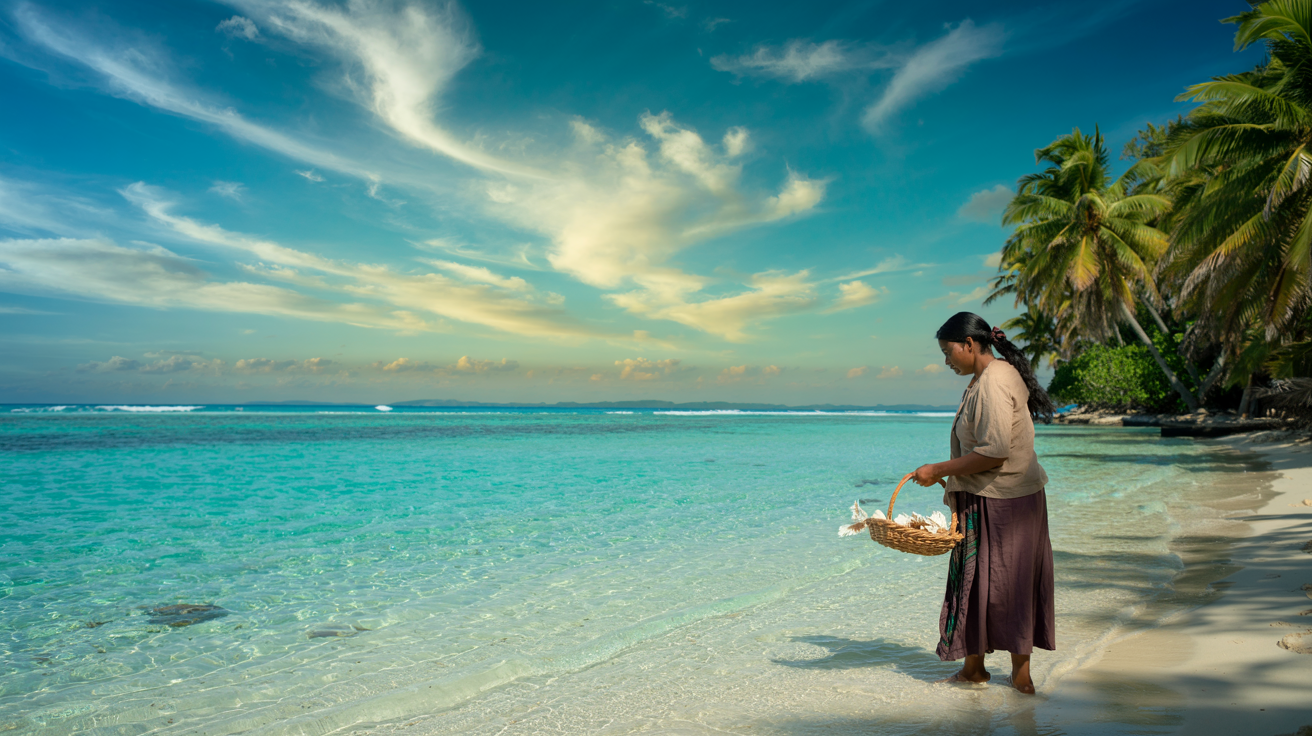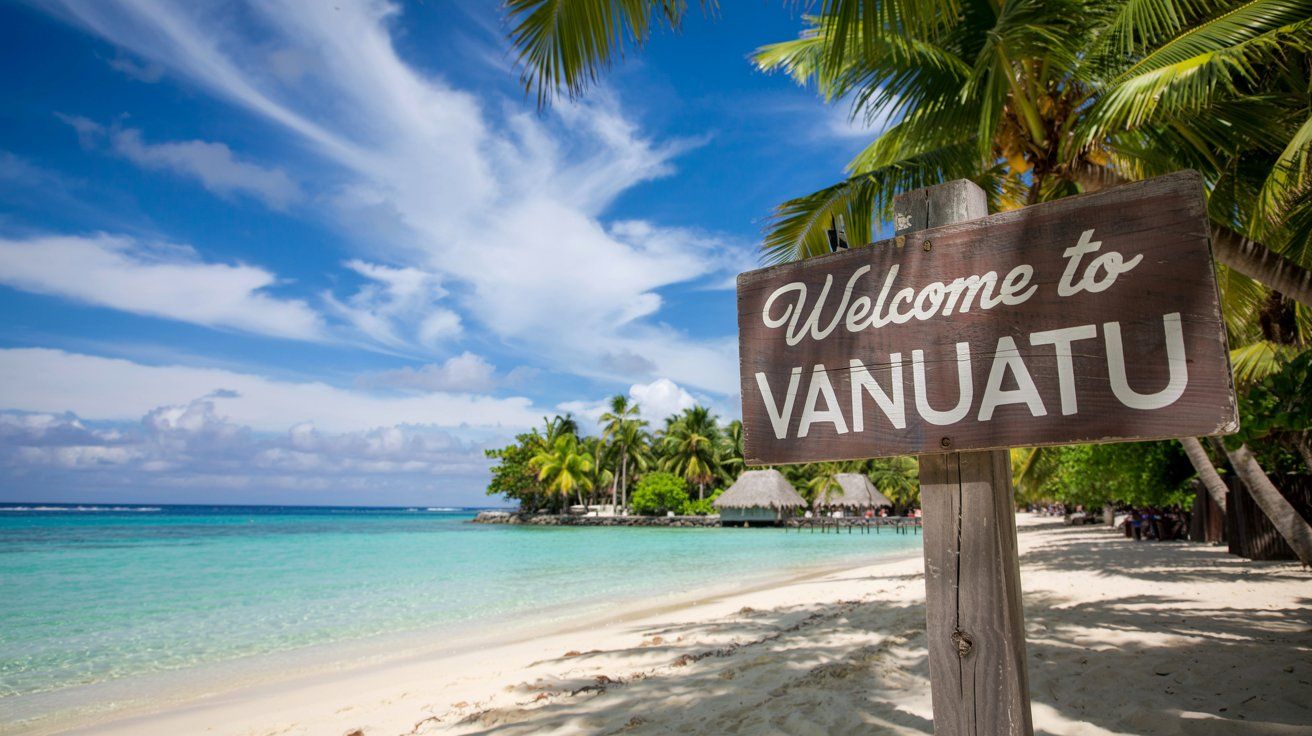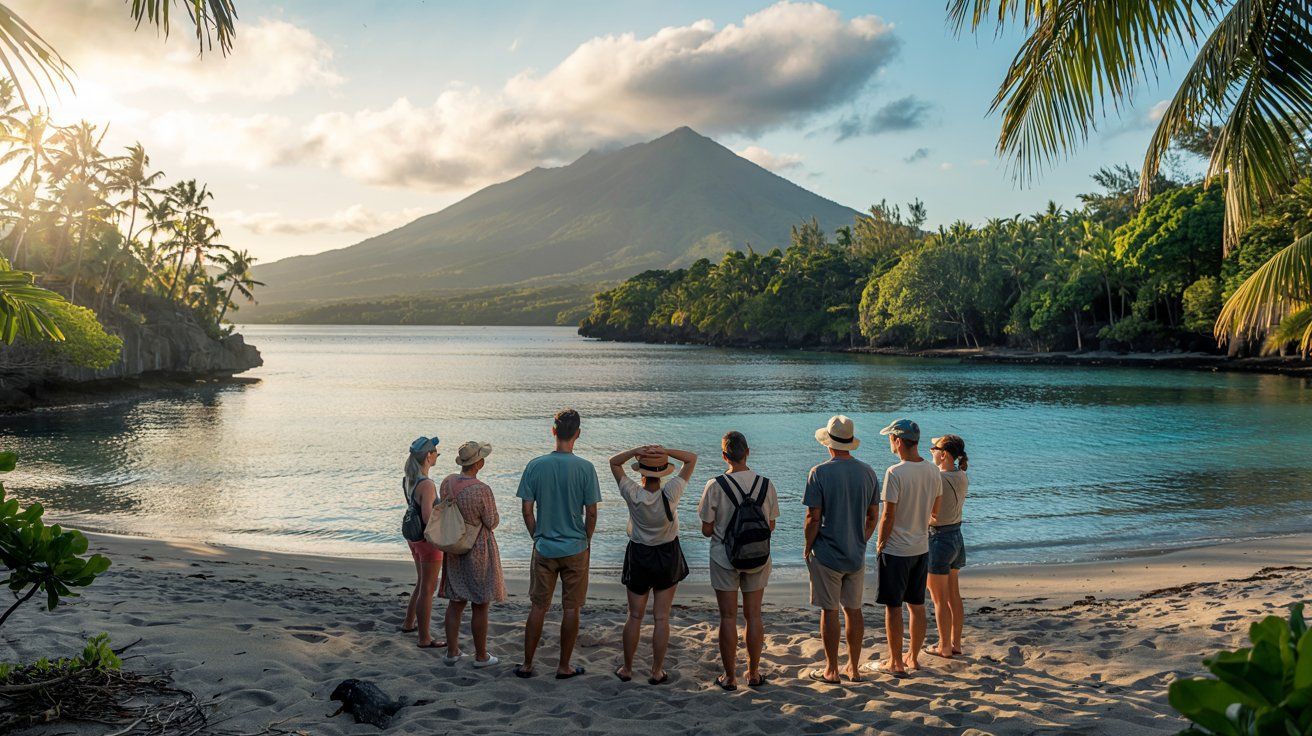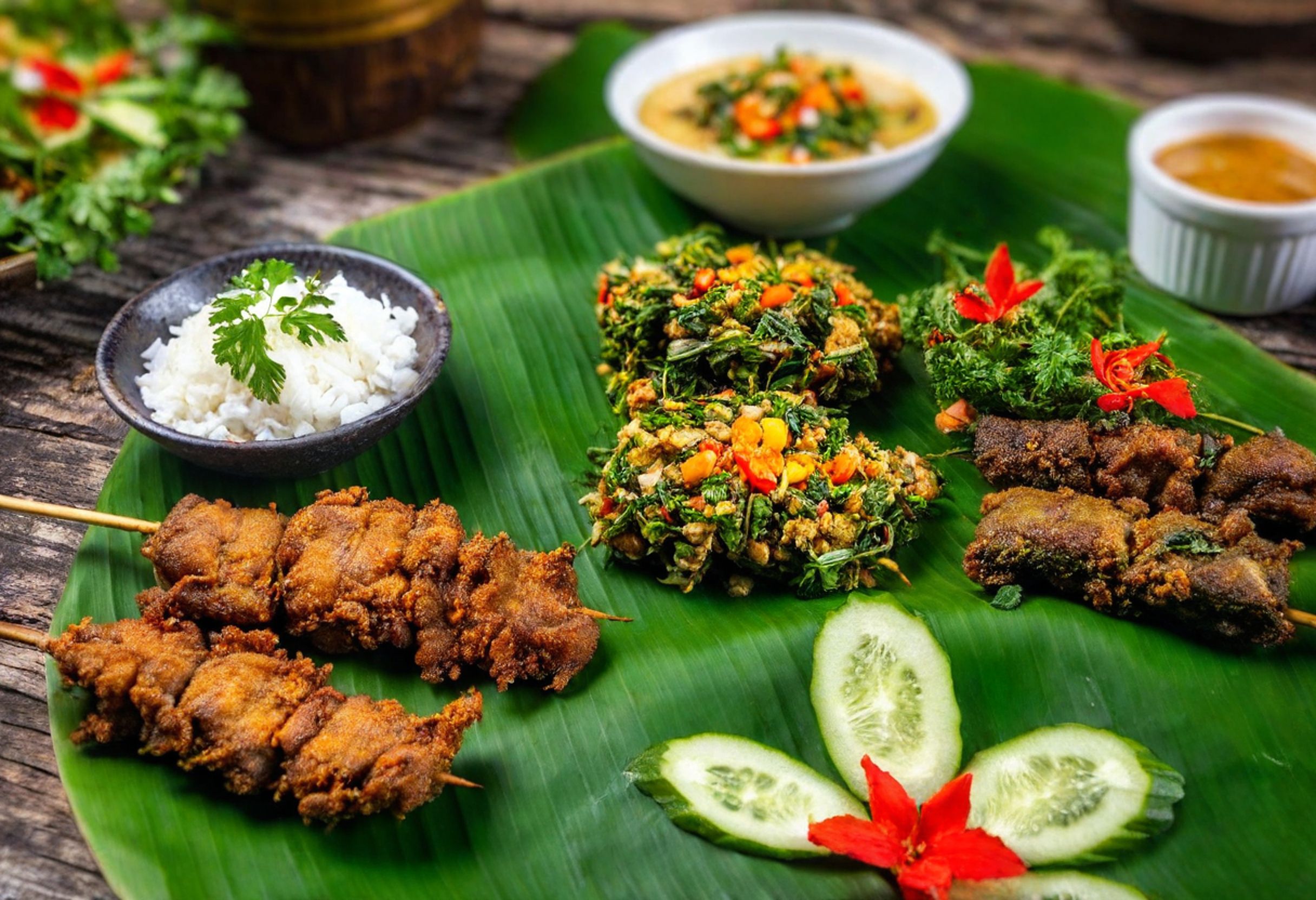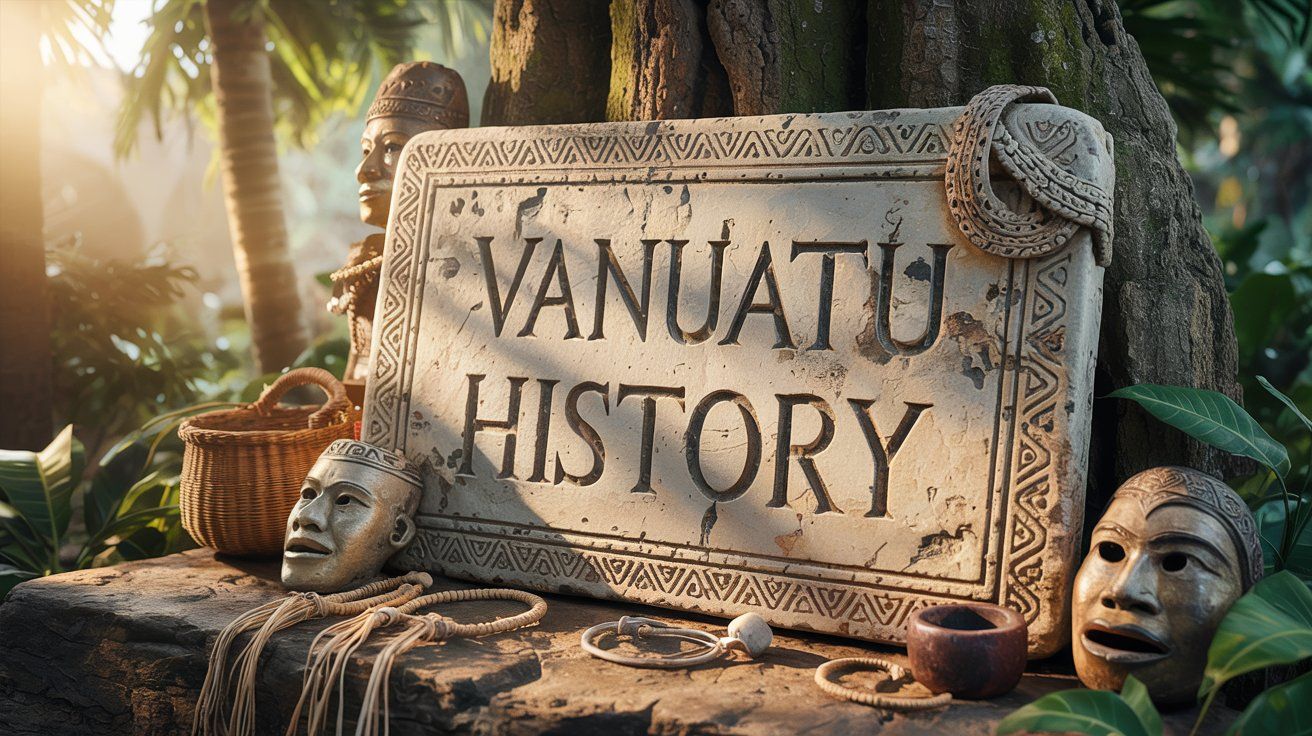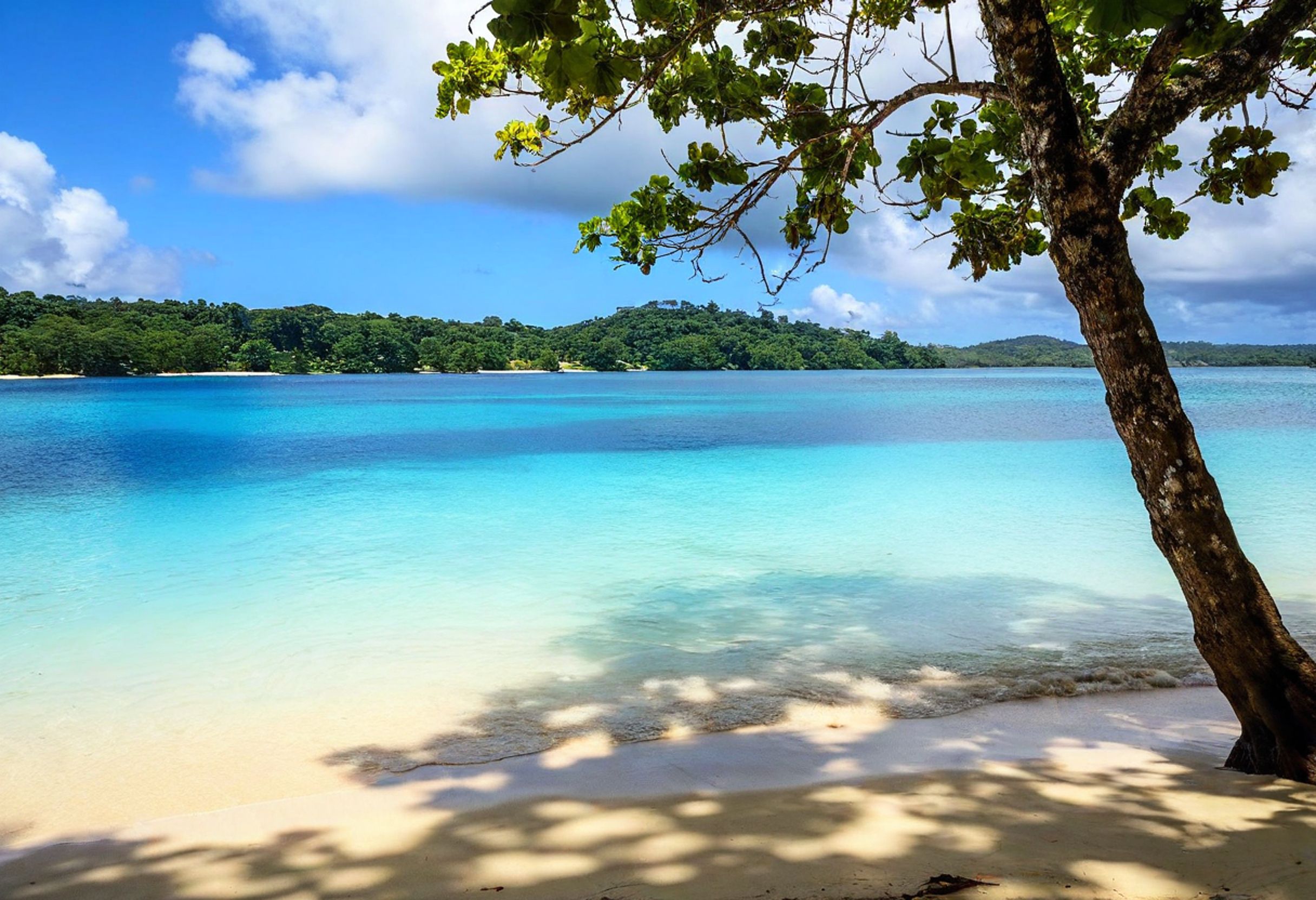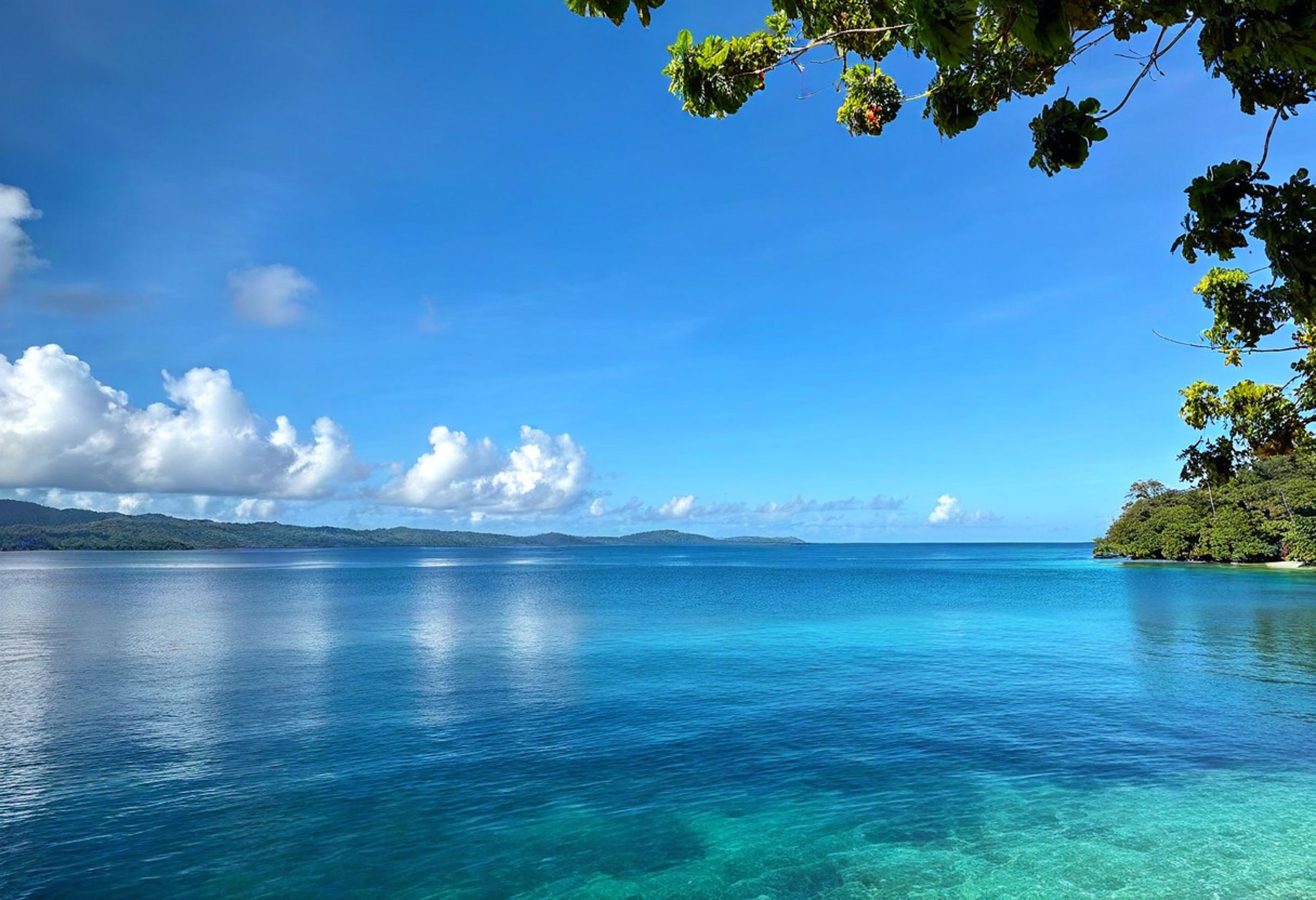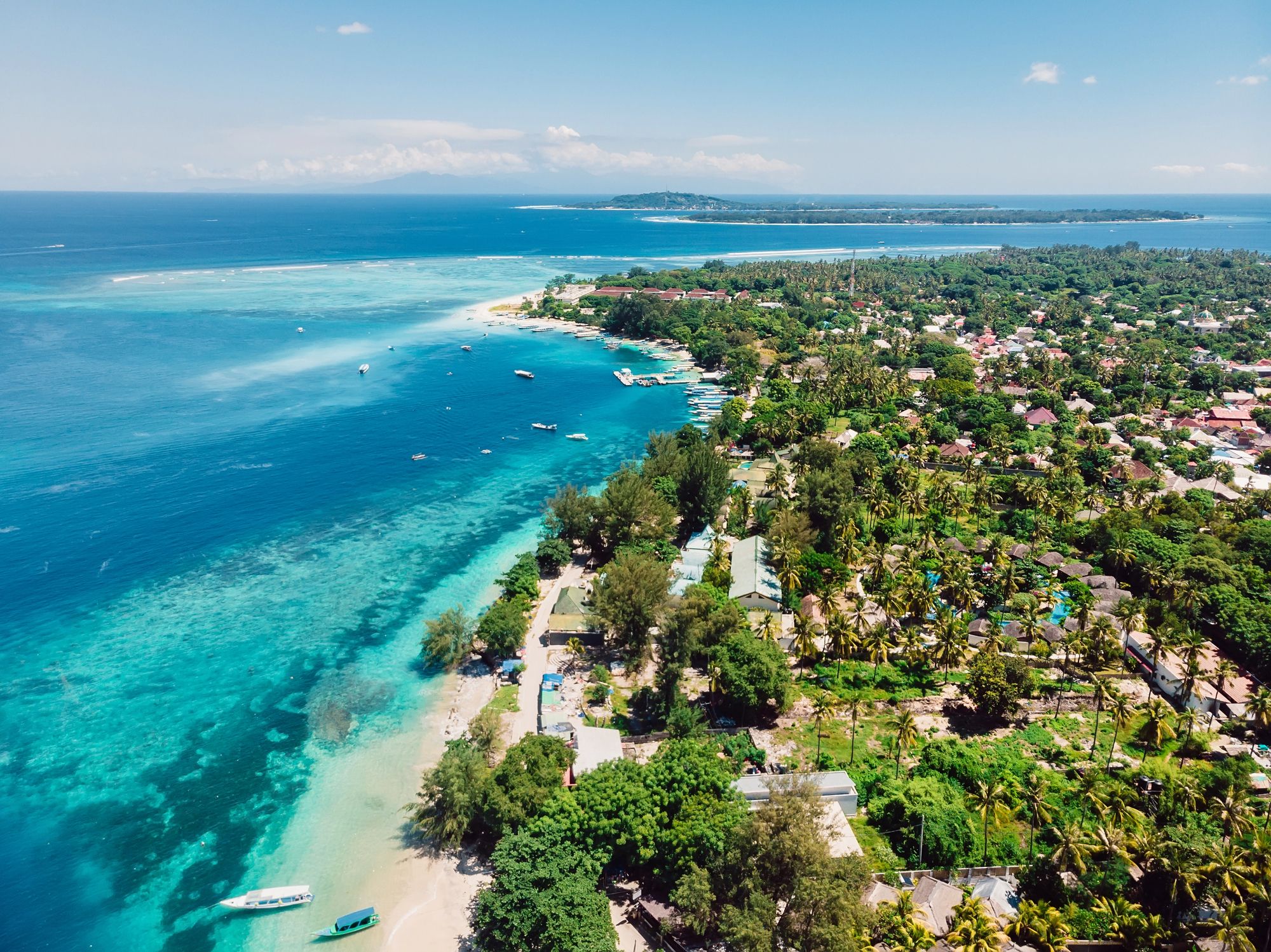Vanuatu stretches out like a string of emerald beads in the southwestern Pacific Ocean, about 1,090 miles east of Australia. This chain of over 80 volcanic islands is where adventure and relaxation meet for travelers who want something a bit off the beaten path. Vanuatu’s blend of Melanesian culture, French and British colonial history, and wild natural beauty makes it one of the Pacific’s most authentic destinations.
There’s no shortage of things to do here—swing into blue holes on a rope, zipline through thick rainforest, or just chill on a quiet beach. The islands gained independence from France and Britain in 1980, but you’ll still notice their influence in the food and daily life. Vanuatu hasn’t gone the way of glitzy resorts; villages outside Efate mostly stick to their traditional ways.
From overwater bungalows to beachfront resorts, find your perfect stay in this island nation of more than 80 islands. Instant booking with best price guarantee!
Browse Accommodations Now
The December 2024 earthquake hit some places, but most islands bounced back and now welcome visitors with open arms. Most people kick off their trip in Port Vila, the capital, before heading out to places like Espiritu Santo with its legendary blue holes, or Tanna, where you can actually stand on the rim of Mount Yasur, a rumbling volcano. Pack light, grab reef-safe sunscreen, and get ready for an adventure your friends probably haven’t even heard about.
Geography and Location
Vanuatu is an island nation in the South Pacific Ocean. The Y-shaped archipelago stretches around 1,300 kilometers and includes 83 mostly volcanic islands.
Position in the Pacific Ocean
Vanuatu sits at 16°00′S 167°00′E in the southwestern Pacific. It’s about 1,750 kilometers east of northern Australia and 500 kilometers west of Fiji. The Solomon Islands are to the north, and New Caledonia is about 540 kilometers southwest.
Vanuatu belongs to Melanesia, a subregion of Oceania. Its spot along major Pacific shipping routes gives it some strategic importance.
When you land in Vanuatu, you’re really out there—major landmasses are far away, and that’s shaped the country’s unique culture and development.
Major Islands of Vanuatu
Vanuatu includes 13 main islands and a bunch of smaller ones. Espiritu Santo is the largest, covering 3,955 square kilometers, with mountains reaching up to 1,879 meters.
Efate, where you’ll find Port Vila, is the most developed and the main entry point for visitors. Most tourist infrastructure and government offices are here.
Other islands worth knowing about:
- Tanna, home to Mount Yasur, one of the world’s most accessible active volcanoes
- Malekula, the second largest, with a wild mix of traditional cultures
- Pentecost, famous for inventing land diving—the original bungee jump
- Ambrym, with twin active volcanoes and a reputation for incredible wood carvings
Climate and Natural Features
Vanuatu has a tropical climate with two main seasons. The wet season, November to April, brings heat, humidity, and sometimes cyclones. From May to October, it’s drier and more comfortable for visitors.
Volcanic activity has shaped the islands’ dramatic landscapes. You’ll see active volcanoes, thick rainforests, coral reefs, and beaches that look almost untouched.
Volcanic soil makes the land fertile, so agriculture thrives. The coasts are alive with marine life and colorful reefs, perfect for diving and snorkeling.
Temperatures generally stay between 18°C and 33°C all year. Mountainous islands get more rain than the flat ones, so you’ll notice lots of microclimates if you travel around.
History of Vanuatu
Vanuatu’s story stretches from ancient Melanesian roots to its current status as an independent republic, shaped by colonialism and the fight for self-governance.
Pre-Colonial Era and Melanesian Heritage
Archaeologists say Melanesian people first settled Vanuatu over 3,300 years ago. They brought Austronesian languages and laid the groundwork for the islands’ indigenous culture.
Early societies built complex social structures and traded between islands. Art, music, and dance flourished—and you’ll still see their influence today.
Ceremonies, customary land ownership, and trading valuable items like mats and pig tusks played a big role in daily life. Each island developed its own cultural twists.
People navigated between islands, so communities stayed connected, despite being scattered. Before Europeans arrived, islanders lived mostly in isolation from the world, but their societies were anything but simple.
Colonial Period: New Hebrides
Europeans first showed up when Portuguese navigator Pedro Fernandes de Queirós landed in 1606. By the 1800s, traders, missionaries, and settlers were visiting more often.
They called the islands the New Hebrides. By the late 19th century, both Britain and France wanted a piece, which led to plenty of tension.
In 1906, Britain and France decided to run the place together as a condominium. That meant two sets of schools, laws, and governments. People could pick which system to use, but honestly, it just got confusing and unfair.
Colonial rule changed a lot. Christian missionaries converted many locals, and European diseases plus “blackbirding” (forced labor) shrank populations on some islands.
Path to Independence
After World War II, anti-colonial movements spread across the Pacific. In the 1970s, local leaders started pushing hard for independence.
Father Walter Lini stepped up as a main voice in the independence movement. His New Hebrides National Party (which became the Vanua’aku Pati) called for self-rule and unity among the islands’ different peoples.
Not everyone was on board. Some plantation owners and French-speaking islanders resisted, sparking tension and even brief rebellions on Espiritu Santo.
Still, the independence movement kept gaining ground. Britain and France eventually agreed to talks, and in 1975, the first representative assembly formed to draft a constitution and get ready for self-rule.
Republic of Vanuatu and Independence Day
On July 30, 1980, the New Hebrides officially became the Republic of Vanuatu. Now, July 30 is Independence Day—a huge national celebration.
Father Walter Lini became the first Prime Minister. The country dropped the colonial name and chose “Vanuatu,” which means “Our Land Forever” in several local languages.
Early independence came with plenty of hurdles. The new government had to merge two different systems and deal with some islands trying to break away. Even with these problems, Vanuatu managed to set up a parliamentary democracy.
Since then, Vanuatu has carved out its own identity in the world. It joined the United Nations in 1981 and plays an active role in regional groups like the Pacific Islands Forum and Melanesian Spearhead Group.
People and Demographics
Vanuatu’s people are as diverse as its landscape, with deep cultural traditions. The country’s demographics reflect Melanesian roots and colonial influences, creating a society that balances tradition and change.
Elegant resorts, tropical villas, and vacation rentals with immediate confirmation. Experience a culture dating back to 1,300 BC in this breathtaking archipelago!
See Available Properties
Population of Vanuatu
Vanuatu’s population keeps growing. Right now, it’s around 335,169 people—just a tiny fraction of the world’s total.
The birth rate is high, about 21.57 births per 1,000 people, while the death rate is much lower at 3.98 per 1,000. That means the population grows by about 1.63% each year.
With 12,190 square kilometers of land, the population density sits at roughly 27 people per square kilometer (or 71 per square mile).
One thing you’ll notice if you visit: Vanuatu’s population is mostly young. This youthful vibe shapes the country’s priorities and culture in a big way.
Ethnic Groups and Ni-Vanuatu Identity
Most people here are Ni-Vanuatu, the name for the islands’ indigenous people. Being Ni-Vanuatu is a source of pride and identity.
You’ll also meet folks from different backgrounds who add to the mix:
- Ni-Vanuatu: Indigenous Melanesians
- Europeans: Descendants of colonial settlers
- Asians: Mainly Chinese and Vietnamese communities
- Other Pacific Islanders: From nearby island nations
The Ni-Vanuatu identity connects people across all 83 islands. Even though they speak many different local languages, they share cultural values—community, respect for tradition, and a strong tie to the land.
Most Ni-Vanuatu live in rural areas and farm for a living. Cities like Port Vila and Luganville are more diverse.
Melanesian People and Culture
Vanuatu is part of the Melanesian world, sharing culture with neighbors like Papua New Guinea, Solomon Islands, and Fiji. Melanesian values shape daily life and social rules.
Religion is a big deal here. About 93.4% of people are Christian, mostly Protestant (75.1%), then Catholic (13.5%). Traditional beliefs and animism (4.6%) still matter, often blending with Christianity.
If you visit a village, you’ll see how community ties and respect for chiefs and elders keep everything running.
The “kastom” (custom) economy is alive and well. People trade, own land together, and keep traditions going right alongside the cash economy.
Languages of Vanuatu
Vanuatu’s language scene is wild—three official languages and more than a hundred local ones. This mix comes from the islands’ tangled history and rich culture.
Official Languages: Bislama, English, and French
Bislama is the everyday language for most people. It’s a creole, mostly English with some French thrown in. You’ll hear it everywhere—on the street, in government, on the radio. Bislama lets people from different islands actually talk to each other.
English and French are official too, thanks to the joint colonial past. Schools teach in either English or French, depending on whether they’re Anglophone or Francophone.
Signs, official papers, and lots of businesses use all three languages. In tourist spots, most people speak some English, but if you throw in a few words of Bislama, you’ll get a smile.
Linguistic Diversity in Vanuatu
Vanuatu has the highest linguistic density per capita in the world. Over 138 indigenous languages are spoken across 83 islands—even though the population is only about 300,000.
These languages come from the Oceanic branch of the Austronesian family. What’s really interesting is how languages can change from one village to the next, sometimes just a few kilometers apart.
Islands like Tanna, Malekula, and Espiritu Santo have several distinct languages each. Some are spoken by just a handful of people.
This linguistic diversity faces challenges. Urbanization and the dominance of official languages in schools and media put smaller languages at risk. Still, many communities fight to keep their languages alive—they see them as the heart of their identity.
Culture and Traditions
Vanuatu’s culture is a colorful patchwork, stitched together from ancient Melanesian roots and newer influences. These traditions aren’t just for show—they’re woven into daily life. Visitors can experience this cultural tapestry through local customs, celebrations, and religious practices.
Traditional Customs and Melanesian Influence
Melanesian heritage really shapes Vanuatu’s cultural identity. Across the islands, each village has its own way of doing things, with some following matrilineal traditions and others sticking to patrilineal lines—depends on the island, honestly.
When you meet locals, expect a warm handshake and a genuine smile. People usually ask about your family right away, which shows just how much they value community connections.
Art is everywhere. Locals craft unique shell necklaces, wooden carvings, and ceremonial masks. Many villages still make traditional musical instruments—wooden slit drums, gongs, ankle rattles—all of which play a big part in ceremonies.
And then there’s the famous naghol, or land diving, on Pentecost Island. Men leap from tall wooden towers with only vines tied to their ankles. It’s wild to watch and, believe it or not, inspired modern bungee jumping.
Festivals and Celebrations
Vanuatu’s calendar is packed with lively festivals that blend old traditions and modern flair. If you’re lucky enough to be around during one, you’ll see local customs up close.
Independence Day (July 30) turns the whole country into a party—traditional dancing, music, feasting, and villages putting on special ceremonies with custom dances in full traditional dress.
The Arts Festival pops up every few years, pulling together performers from all over the islands. You’ll get everything from intricate costumes and body painting to ceremonial displays and crafts.
Yam harvest festivals, and others tied to the farming calendar, are a big deal on many islands. These gatherings come with ritual exchanges, lively dances, and huge communal feasts that really bring everyone together.
Religion and Christianity
Religion in Vanuatu is a fascinating mix. Christian missionaries arrived in the 19th century, and today, about 83% of ni-Vanuatu identify as Christian—Presbyterian, Anglican, Catholic, Seventh-day Adventist, you name it. Sunday church services are a big social event, and the multi-part harmonies during hymns are honestly beautiful.
Still, traditional beliefs haven’t disappeared. Many villages keep sacred sites where they say ancestral spirits live, and visitors are expected to respect these taboo places and customs.
Local kastom (custom) and Christianity often blend together. Many ni-Vanuatu follow both, weaving magic, sorcery, and spiritual respect into daily life and community decisions, especially out in the rural areas.
Easy booking across stunning accommodations from luxury resorts to eco-friendly retreats. This Y-shaped archipelago offers pristine beaches, active volcanoes, and world-class diving!
Secure Your South Pacific Getaway
Economy and Employment
Vanuatu’s economy is a patchwork of traditional practices and modern challenges. Agriculture and fishing are the mainstays—most people rely on these to feed their families and support their communities.
Agriculture and Yams
Agriculture is at the heart of life here, giving more than 70% of the population a way to make a living. Most farming is small-scale or just for the family, with any extra sold at local markets.
Yams aren’t just food—they’re packed with cultural meaning. Farmers use old-school techniques to grow yams, often mixing them with taro, manioc, and fruit in their garden plots.
If you wander through rural areas, you’ll spot farmers working by hand, using tools and know-how passed down through generations. There’s barely any machinery, which helps keep the soil healthy and supports local biodiversity.
Of course, it’s not all smooth sailing. Cyclones and climate change hit crops hard, messing up planting cycles and threatening food security.
Fishing Industry
Fishing keeps coastal communities going, both for food and income. The Pacific waters around Vanuatu are full of tuna, snapper, and all sorts of reef fish.
Most fishermen head out in small boats, sticking to traditional methods. Early mornings, you’ll see them bringing their catch to the local markets.
The government is pushing for more sustainable fishing—setting up marine protected areas and putting rules in place for commercial fishing.
Fishing cooperatives are popping up in some communities, giving fishers better bargaining power and helping them get fair prices while looking after the ocean.
But climate change is causing headaches here, too. Warmer oceans and coral bleaching are making life tougher for fish and, by extension, for those who rely on them.
Employment Trends
Vanuatu’s employment rate sits at about 31%, which honestly isn’t great for national development. Most people work in subsistence jobs, so formal employment is pretty limited.
Tourism is one of the brighter spots. Resorts and tours create jobs and bring in much-needed foreign exchange.
Here’s how employment breaks down:
- 48% in agriculture (2021)
- 8.5% in industry (2021)
- The rest in services, mostly tourism
The government is rolling out its first National Employment Policy. They hope it’ll improve skills training, give better labor market info, and help protect workers.
Youth unemployment is a real issue. Young people often bounce between informal and formal work, mixing traditional subsistence with the occasional paid job.
Government and Political System
Vanuatu runs as a parliamentary democracy, blending modern politics with traditional customs. The capital, Port Vila, is where the government operates, drawing from both British and French colonial influences.
Structure of the Republic of Vanuatu
Vanuatu follows a parliamentary republic model. The President, elected by an Electoral College made up of Parliament and provincial government leaders, acts as Head of State for five years. It’s mostly a ceremonial role.
Real power sits with the Prime Minister and the Council of Ministers. The Prime Minister handles day-to-day administration and makes sure laws are enforced. Parliament, filled with elected reps, serves as the legislative body.
The legal system is a bit of a mash-up—British common law, French civil law, and customary law all come together here, reflecting Vanuatu’s colonial past and its commitment to indigenous practices.
Political History and Western Influence
Vanuatu gained independence in 1980 after years of joint British and French rule as the New Hebrides. The so-called Condominium left a big mark on the country’s politics.
You can still see Western influence in the government structure. The parliamentary system follows the British Westminster model, but French touches are there too.
After independence, the Vanua’aku Pati led the charge for self-rule. These days, coalition governments are pretty common, showing just how diverse political opinions are across the islands.
Port Vila is the hub for government, embassies, and big decisions. Most national events and political action happen in this coastal capital.
Tourism in Vanuatu
Vanuatu is a dream for travelers—pristine beaches, active volcanoes, and a culture that’s alive across all 83 islands. Tourism is a lifeline for the economy, offering everything from epic diving to eye-opening village visits.
Popular Destinations
Port Vila, on Efate island, is where most people start their adventure. The city buzzes with colorful markets, waterfront restaurants, and nearby resorts with gorgeous beaches. Mele Cascades, just outside town, is a favorite—those waterfalls are something else.
Tanna island pulls in thrill-seekers to Mount Yasur, one of the world’s most accessible active volcanoes. Standing on the crater’s edge as lava erupts? It’s unforgettable, especially at dusk.
Espiritu Santo, the largest island, is famous for its blue holes—crystal-clear freshwater pools. Champagne Beach lives up to the hype with its white sand and stunning waters. Divers flock here for the SS President Coolidge, a WWII shipwreck that’s considered one of the world’s top dive sites.
Cultural Attractions
Vanuatu’s cultural heritage is the real deal. You can visit traditional villages where ancient customs are still part of daily life.
Pentecost Island’s land diving (naghol) is legendary. Between April and June, men jump from tall towers with only vines tied to their ankles—a fertility ritual that inspired bungee jumping.
In many villages, custom dances feature elaborate masks and traditional outfits. Kava drinking is also a big part of ceremonies everywhere.
Ekasup Cultural Village near Port Vila makes it easy to get a taste of ni-Vanuatu traditions. You’ll learn about medicinal plants, traditional cooking, and hunting skills that have kept communities going for generations.
Sports and Recreation
Vanuatu’s sports and recreational activities mix international favorites with local flair. The country has built several sporting facilities and often hosts regional competitions.
Popular Sports
Football (soccer) is huge here—games happen all over the islands, and the national team competes in Pacific tournaments, putting Vanuatu on the sporting map.
Cricket has caught on, especially in rural areas. Beach cricket is everywhere, played with homemade gear and local rules.
Basketball courts are popping up in bigger towns, and more young people are getting into the sport, thanks in part to support from international programs.
Water sports just make sense in a place like this. Swimming, kayaking, and outrigger canoe racing tie modern fun with traditional skills. Most resorts rent out gear if you want to give it a try.
Golfers aren’t left out—Port Vila has courses, and every now and then, you’ll catch an international tournament there.
Community Events
The Pacific Games always grab the spotlight in Vanuatu’s sporting calendar. Athletes from all over the Pacific show up, and honestly, the whole country gets swept up in the excitement.
Round island relays let local talent shine while highlighting Vanuatu’s unique geography. These races aren’t just about winning—they’re a chance for communities along the route to come together, cheer, and celebrate.
Open water swimming events make the most of Vanuatu’s stunning lagoons. Swimmers from near and far dive in, and these meets often spark conversations about protecting our oceans.
Traditional games still matter a lot in village life. People gather for sand drawing or coconut husking contests, and it’s not just fun—it keeps cultural traditions alive.
Find available hotels and vacation homes instantly. No fees, best rates guaranteed!
Check Availability Now
Local festivals love to mix in sports, blending athletic challenges with cultural festivities. If you visit, you’ll probably stumble into some kind of friendly competition, no matter the time of year.

